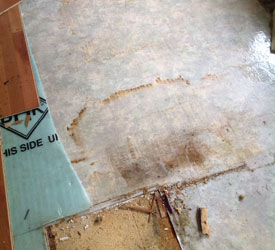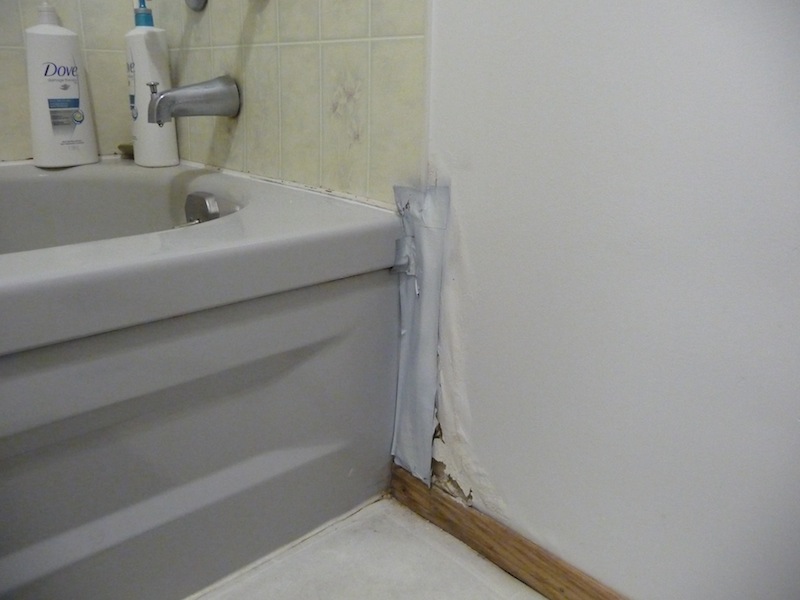Listed here below you can find additional high-quality guidance with regards to Preventing Water Damage in the Bathroom.

The washroom is exceptionally susceptible for wet accumulation and also potential water damages as a result of the frequent use water in it. This write-up offers basic examination techniques to assist identifying water damage risks.
The constant use water in the bathroom makes it very at risk for moist accumulation as well as possible water damages. By checking it regularly, you can decrease water relevant problems.
The following set of evaluations is simple to execute and should be done when in every 3 months in order to maintain your washroom healthy as well as to stop potential water damages triggered by the bath tub, the shower, pipe joints as well as plumbing, sinks, cupboards, and also the toilet
Do not overlook doing these examinations and also be comprehensive while doing them. Bear in mind that these straightforward inspections can save you a lot of money by supplying very early signs for water damage
Sinks and Cabinets
Sinks and cupboards are subjected to dampness and also moisture day-to-day and also are usually overlooked. Inspect routinely under the sink and on the counter top above it. Fix any type of drip in the trap as it may suggest drain issues. Browse the sink, sluggish draining pipelines might suggest an obstructed drainpipe. Change sink seals if they are split or loosened.
Tub as well as Shower
The shower as well as tub need special attention and maintenance. Check the tiles and change if fractured. See to it that there is no missing out on cement between the ceramic tiles. Examine and replace broken caulking at joints where the wall surfaces satisfy the floor or the tub. Blocked drains as well as pipes issues will prevent the bathtub from drying and might show significant troubles under the bath tub. Seek advice from a specialist promptly to stop architectural damage. Take note of discolorations or soft areas around the bathtub walls as they might show an interior leak.
Plumbing
Signs for water damage are hard to detect since the majority of pipelines are mounted inside the wall surfaces.
Pay special attention to floor covering and also wall surfaces wetness and spots as they might suggest an unnoticeable plumbing problem. Check moisture levels in adjacent areas too.
The Bathroom
The bathroom is a susceptible water junction. Check the water lines as well as search for leaks around the toilet seat, in the hose, and also under the water container. If you find any type of indications of moisture on the floor around the commode, look for leaks in the toilet rim and container seals.
Know that hanging bathroom bowl deodorants raises the possibilities for blockages.
10 TIPS TO PREVENT WATER DAMAGE IN THE BATHROOM
The average household uses approximately 80-100 gallons of water per person per day. For a family of 4, that's almost 2,500 gallons of water a week! The largest portion of this consumption comes from bathroom use. Flushing the toilet uses the most water, followed by taking a shower or bath. With that much water running through the home, water damage in the bathroom is bound to happen. Knowing how to spot signs of a water leak is essential to preventing long-term damage. This guide provides you with tips to reduce the impact of water damage on your bathroom.
CAUSES OF BATHROOM WATER DAMAGE
Pipe breaks are the most common cause of water damage we see in our daily jobs. The age of a pipe plays a large role in a pipe break as well as corrosion. Over time, the metal begins to break down, allowing water to escape. Frozen pipe breaks are also a concern in the winter months. Toilet overflows caused by paper products or children flushing inappropriate items. Degraded caulking around the toilet or bathtub can allow water seepage, sometimes behind the fixture, into the subfloor or walls. Condensation forms when the water in a pipe is cooler than the air temperature. Beads of water form on the exterior of the pipes, sometimes so much so that the water begins to drip and pool below. Sink or shower backups created by poor drainage. HOW TO PREVENT WATER DAMAGE IN YOUR BATHROOM
Inspect your toilet supply line for worn or frayed hoses and replace them as needed. Winterize your plumbing to prevent a frozen pipe break. Use vent fans to prevent condensation that can lead to mold growth. Routinely check and replace degraded caulking around your toilet or bathtub. Increase the temperature in your toilet tank and insulate your pipes during the warm summer months to keep condensation from forming. Use child safety locks on the toilets. Flush only toilet paper. "Flushable" wet wipes are actually not good for your plumbing system. Additionally, feminine hygiene products should not be flushed. Prevent water from escaping the tub or shower. Make sure shower curtains are in good condition. Inspect shower doors and replace the seal strip if necessary. Wipe up any water that accumulates on the floor and use bath mats. Water left to sit can cause damage to the tiles and flooring. Refrain from using bath products containing heavy oils to avoid a clogged drain.

I stumbled upon that page on Preventing Water Damage in the Bathroom while scouting around the internet. I beg you take a moment to promote this blog posting if you enjoyed it. I am grateful for your time. Visit us again soon.
Visit Link